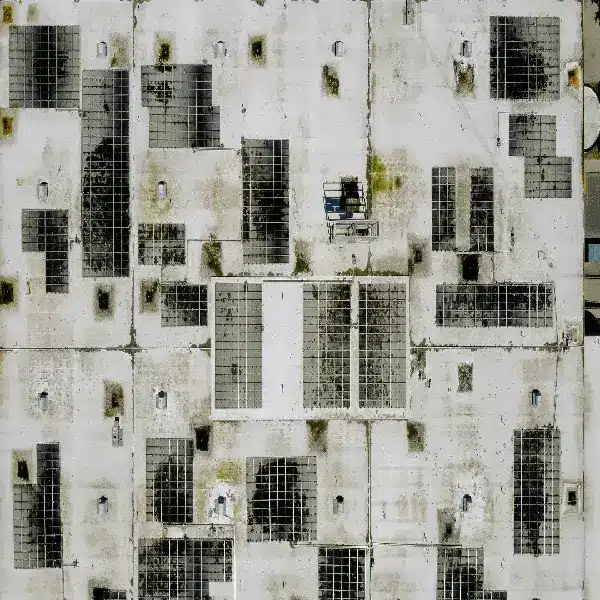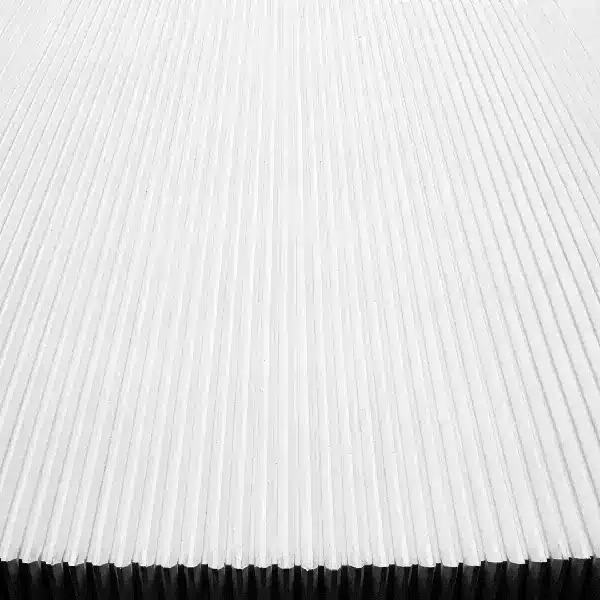
During a hurricane, strong winds and heavy rain can exploit even minor vulnerabilities in a roof. Cracks, loose fasteners, or weakened seams can result in severe leaks, while wind uplift may tear away sections of the roof entirely. Without proper maintenance, these problems are more likely to occur, leaving your building exposed to water intrusion and structural damage.
Flying debris is another significant threat during hurricanes, as it can puncture or dent roofs. Without reinforcements like hurricane straps or proper sealing, these impacts compromise your roof’s integrity. This creates a cascading effect — water infiltration damages insulation, weakens the roof deck, and disrupts business operations.
By scheduling roof inspections and repairs before hurricane season, you reduce the risk of these outcomes. To prepare effectively, however, it’s essential you can recognise the warning signs that indicate potential vulnerabilities.
Detecting early warning signs of roof problems is critical to protecting your commercial property from the damage hurricanes can cause. A roof in poor condition is more vulnerable to wind uplift, water infiltration, and structural failure. Here are the key indicators that your roof may need attention before hurricane season:
Water stains or leaks during heavy rain signal roof damage. Persistent leaks often point to deteriorated seams, clogged drains, or punctures in the roofing membrane. Left unaddressed, these issues can worsen during hurricanes, leading to significant water damage.
Sagging areas in the roof suggest structural problems, such as weakened supports or water pooling. While minor sagging might be tolerable, significant sagging — such as noticeable dips, uneven surfaces, or areas that collect standing water after rain — demands immediate action to prevent collapse during severe storms. If you’re unsure whether sagging is severe, consult a professional inspector to assess the roof’s structural integrity and recommend repairs.
Cracks, tears, or blisters in roofing materials weaken your roof’s ability to resist wind and water. These issues increase the likelihood of leaks and wind uplift during a hurricane.
Flashing around vents, chimneys, and roof edges is vital for water resistance. Corroded or damaged flashing creates entry points for rain, especially during heavy downpours. Inspect and repair these areas to ensure a watertight seal.
Blocked drains or gutters prevent water from flowing off your roof, leading to pooling that weakens the structure. Clearing these systems before hurricane season reduces the risk of leaks and water damage.
A damaged or aging roofing membrane compromises the roof’s barrier against the elements. Inspect for thinning, punctures, or areas that show wear, and address them to ensure reliable protection.
Loose or missing fasteners are a major vulnerability during strong winds. Ensure all fasteners are secure to prevent sections of the roof from being lifted by hurricane-force winds.
By addressing these signs of roof problems early, you can strengthen your property against the extreme conditions of hurricane season. A professional inspection helps identify vulnerabilities and ensures your roof is prepared to withstand severe weather.
Investing in a hurricane storm damage risk reduction system is a practical step to protect your commercial property from severe weather. These systems are specifically designed to reinforce roofs against high-speed winds, torrential rain, and flying debris.

Using high-performance materials, such as those found in the Conklin Roof Coating System, can provide additional protection. Conklin coatings create a seamless, watertight barrier while extending your roof’s lifespan and reducing energy costs.
By investing in a hurricane-resistant roofing system, your business can:
A hurricane-resistant roof isn’t just an upgrade — it’s an investment in protecting your business’s assets and continuity during storm season.
Preparing your commercial roof before hurricane season is essential for minimizing roof damage and ensuring uninterrupted operations. Recognizing early warning signs like leaks, sagging areas, or damaged flashing allows you to take timely action.
Pairing routine inspections with a hurricane storm damage risk reduction system—including hurricane straps, impact-resistant materials, and moisture-resistant underlayment—strengthens your roof against the forces of nature.
Hurricane season waits for no one. Schedule a free professional inspection, make necessary upgrades, and implement advanced hurricane-resistant solutions today. A prepared roof means a resilient business. Contact us to safeguard your property and face the storm season with confidence.